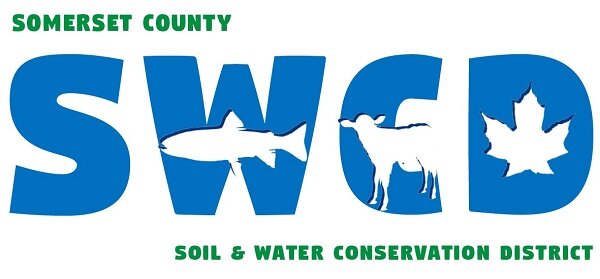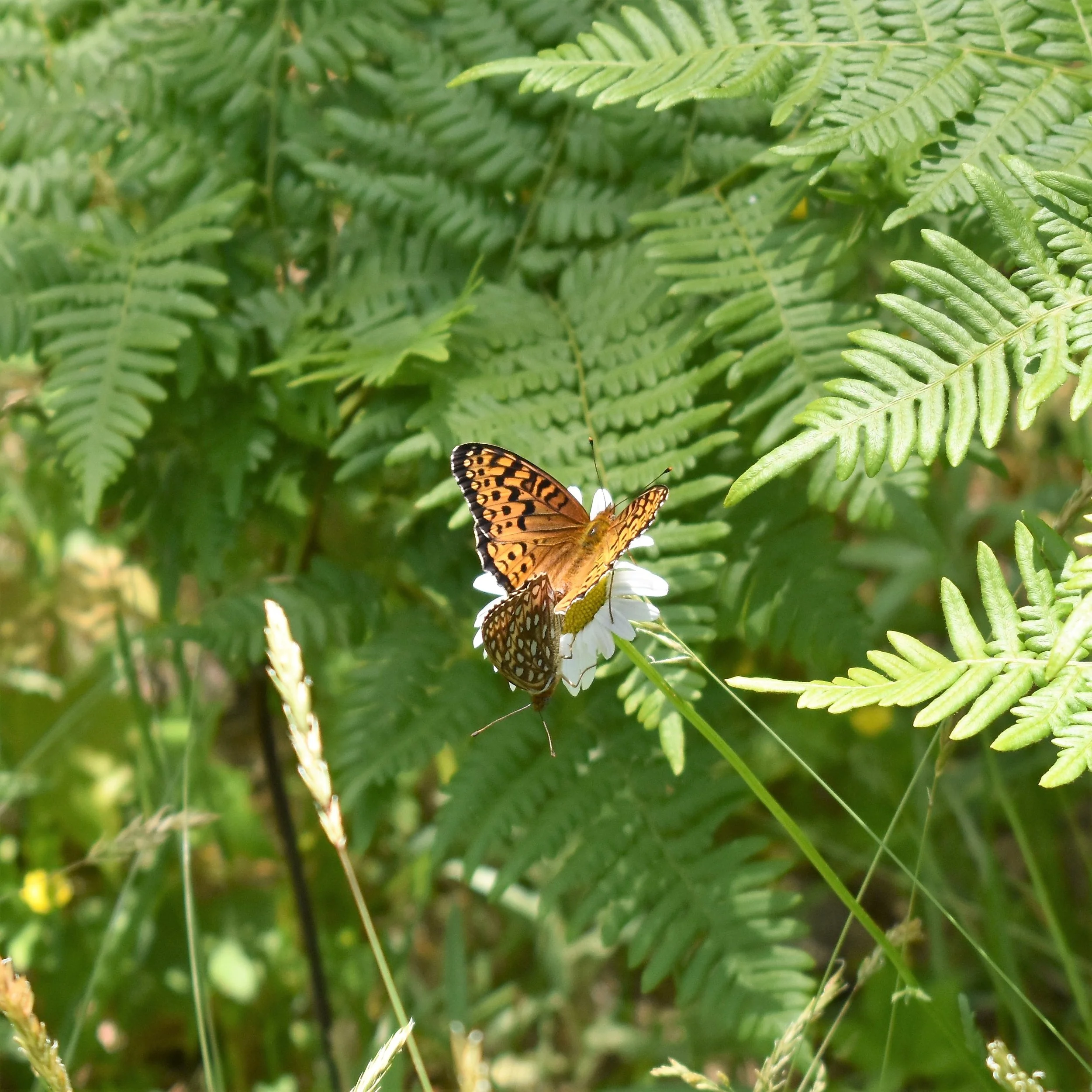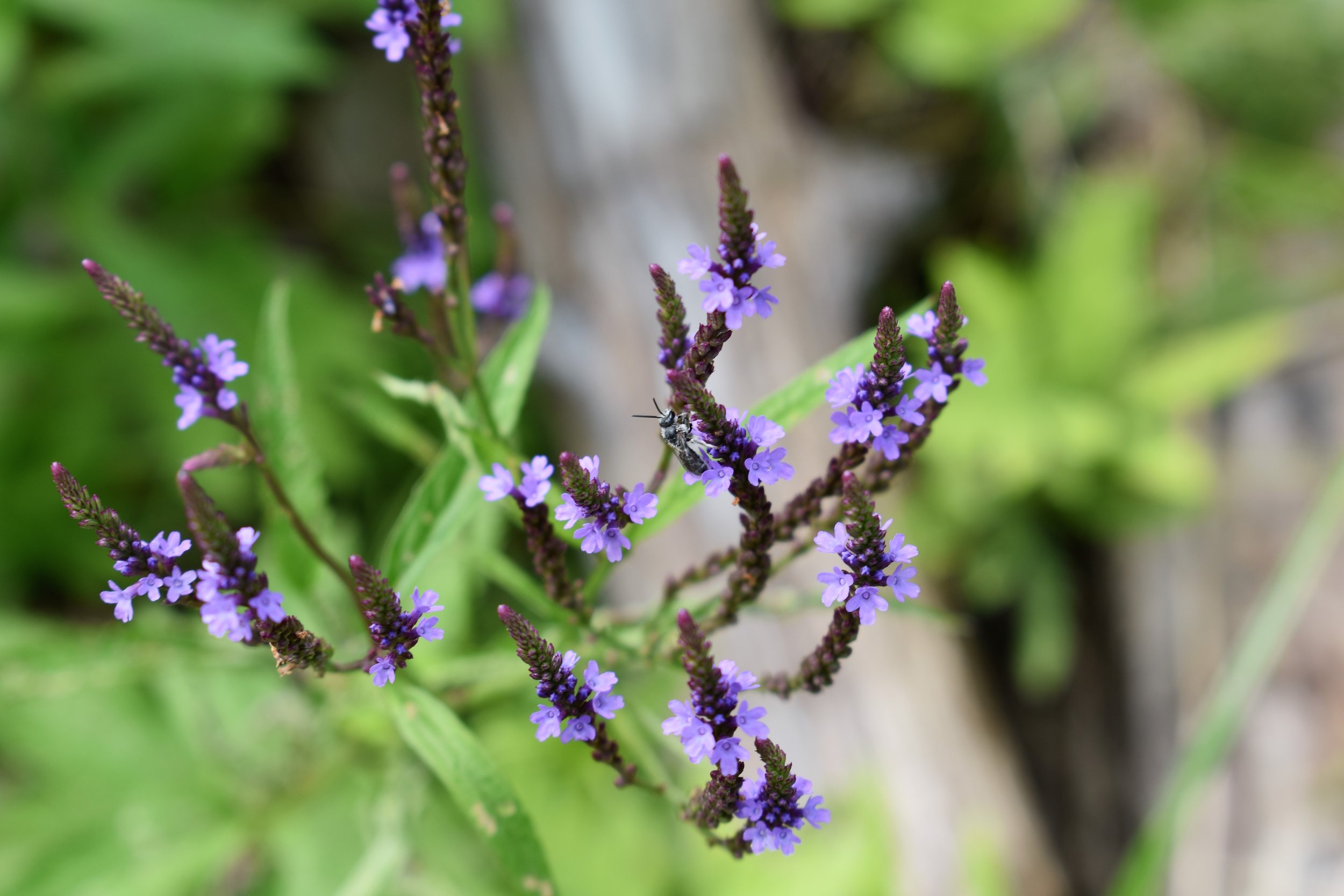This article first appeared in Maine Woodlands, June 2022. Reprinted here with permission of Maine Woodland Owners.
Flower gardens are well known for their support of pollinators like bees, butterflies and beetles, but do forests provide the same benefit? From wildflowers to trees, brush piles to patch cuts, woodlands are also important habitat for these creatures. Woodland owners have the opportunity to play a vital role in the conservation of hundreds of species of pollinators who are responsible for the food we eat and also sustain our ecosystems by helping plants reproduce.
Last June, Somerset County SWCD explored the Yankee Woodlot Demonstration Forest in Skowhegan with Hannah Mullally, a pollinator biologist. Our intention was to identify areas that were most important for pollinators, especially native bees. We quickly saw that every patch of woods is valuable.
Yankee Woodlot, like most woodlands in Maine, is rich in wildflowers that are packed with sugar and protein in their nectar and pollen. American honeysuckle (Lonicera canadensis), a demure, native shrub that blooms before other shrubs even have leaves, will often be loaded with bumblebees, mason bees or other early season bees. False Soloman’s seal (Maianthemum stellatum) nd blue cohosh (Caulophyllum thalictroides), which bloom a bit later, are particularly important for queen bumblebees. Through thoughtful management, beneficial species like blue-bead lily (Clintonia borealis), wild sarsaparilla (Aralia nudicaulis), as well as nightshades, raspberries, asters, and goldenrods are encouraged and provide ideal diverse conditions throughout the growing season.
Wild flowers along woods roads, skidder lanes and landings can attract a host of pollinator species seeking nectar and pollen. pc Rise & Shine Consulting
And though many trees are pollinated by the wind, they are still a vital foraging resource. American beech (Fagus grandifolia) is an important source of early season, protein-rich pollen, as is red maple (Acer rubrum). Eastern hemlock (Tsuga canadensis) and ash (Fraxinus) can be sources of pollen for some bees. But trees provide more than pollen and nectar. Specific plants, known as host plants, are eaten by larvae (caterpillars) of some pollinators. Oaks (Quercus spp.), for example, are host plants for more than 500 species of butterflies and moths.
As important as food, snags, downed trees and stumps provide crucial refuge and over-wintering sites for a host of solitary bee species. Brush piles, stumps and clumps of grass are attractive nesting areas for bumblebees. Solitary wood-nesting bees like hollow tunnels, such as in the soft pithy stems of many woodland plants including Staghorn sumac (Rhus typhina), elderberry (Sambucus spp), blackberries (Rubus allegheniensis) and raspberries. Dry dead wood in warm, sunny locations is important for mason bees and leafcutter bees. The untilled ground and bare soil found in woods roads, landings and skid trails offer a prime location for ground-nesting bees.
The mosaic of habitat types and age classes at Yankee Woodlot encourages a diversity of pollinators. There are more than 4,000 species of native bees in the US, and we know that bee communities vary with different levels of forest management. In other words, the suite of bee species found in a patch cut, for example, will be different from those found in a closed canopy stand.
And while your woodland naturally provides benefits to pollinators, there are things you can do to encourage and support these species - often similar to the best practices for encouraging wildlife.
Leave coarse woody debris, snags and stumps with cavities, leaf litter, and canes, all of which provide valuable nesting sites. At Yankee Woodlot, Hannah suggested we clip Staghorn sumac in spring to expose the pithy stems, which are choice nesting material for some bee species.
Control invasive species! Non-native plants such as shrubby honeysuckle, Japanese barberry and buckthorn reduce native plant diversity, reducing food availability for the pollinator species that have co-evolved with a particular plant.
Manage your forest so it contains canopy, shrubs, understory, as well as a variety of age classes and sizes. Thinning, for example, creates space for more shrubs and encourages forest floor flowers to thrive.
Manage to mimic natural disturbances (leaving fallen trees), which create nesting and foraging conditions that attract different species.
Leave patches of bare soil or sand for ground-nesting bees to colonize, especially along sunny forest edges.
Encourage flowering plants including goldenrod and aster to grow in old roads, trails and landings.
Hannah prepared an annotated short list of Yankee Woodlot’s beneficial species and features, which you can find on the Somerset County SWCD Web site (https://tinyurl.com/ywl-pollinators). Take a look, and then take a walk in your woods to start to appreciate how they are valuable for pollinator conservation.
Yankee Woodlot Demonstration Forest offers pollinators flowers for forage, abundant nesting opportunities in leaf litter and decaying logs and shelter and over-wintering sites in abandoned holes and burrows. pc jbrockway
Jennifer Brockway is Outreach Coordinator for Somerset County Soil & Water Conservation District and a family woodland owner in Waldo County.



